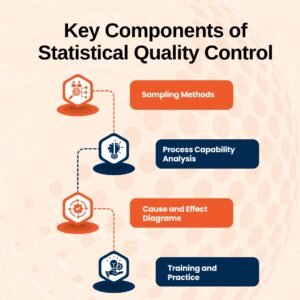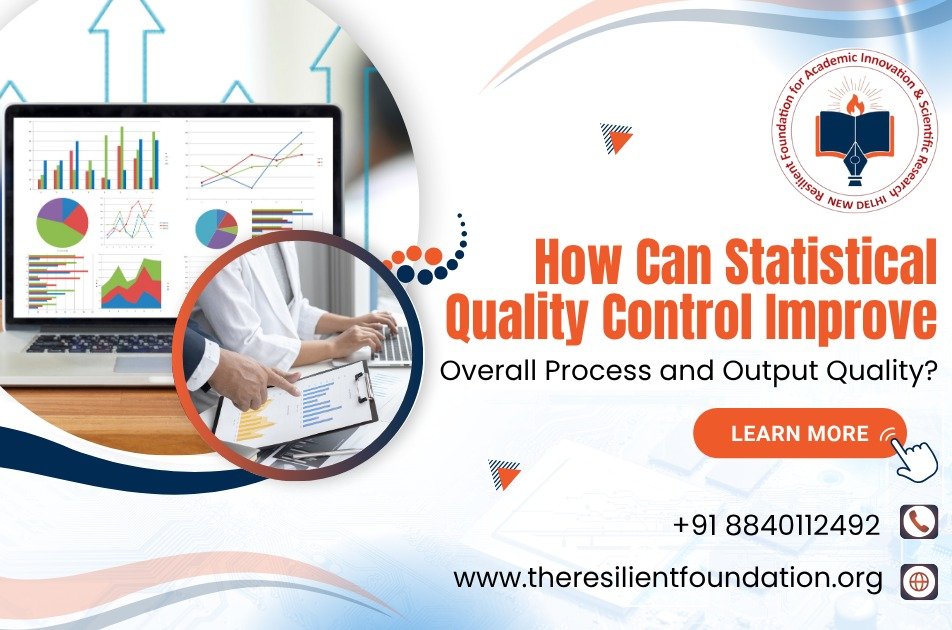In business or research, keeping good quality is important but not always easy. Statistical quality control uses data to check if work is going well and helps fix problems early. Using statistical analysis in research shows what’s working and what needs to change. At Resilient Foundation, we teach these tools in simple ways through technical workshop sessions. Our focus is on practical research skills development; thus, learners can use what they learn in real life and yet improve work quality step by step.
How Statistical Quality Control Enhances Process Control?
Let’s see how statistical quality control makes any work process better:

- Find Problems Early: With statistical analysis in research, we can see mistakes at the start. This helps us fix them before they cause big trouble.
- Make Smart Choices: Quantitative statistical analysis helps us make decisions based on real data. So, we don’t guess — we know what’s working and what’s not.
- Save Time and Material: If we know which part of the process is not working, then we can stop the waste. Thus, this makes the process faster and more useful.
- Keep Process Steady: When we use statistical quality control again and again, the process becomes stable. And it gives the same good result every time.
- Think With Data: People learn to trust data and not just feelings. Our technical workshop builds this habit, and practical research skills development make it easy to apply in daily work.
Key Components of Statistical Quality Control
To use statistical quality control, we must know its main parts. Hence, these tools are easy and helpful:

- Sampling Methods: This means checking only a small part of the work. It saves time but still gives good results. This is a key idea in quantitative statistical analysis.
- Process Capability Analysis: This checks if a process can give results within limits. In statistical analysis in research, this is used to see how strong a process is.
- Cause and Effect Diagrams: These look like fish bones; thus, they help find why a problem is happening. Also, we teach these tools step by step in our technical workshop.
- Training and Practice: Reading is not enough. We need to practice. That’s why we give full focus to practical research skills development in all our sessions.
Improving Final Output Quality Levels
When the process becomes better, the final results also improve. Also, here’s how statistical quality control helps the final output:
- Same Good Quality Every Time: A steady process gives the same type of good results again and again. This is possible through statistical analysis in research.
- Fewer Mistakes: By using quantitative statistical analysis, we thus find where mistakes happen most, and then we fix them.
- Better Reports: Data helps us make clean and clear reports. These are easy to understand. But we teach how to do this in our technical workshop.
- Learn New Skills: When teams learn these methods, they feel more confident. Our practical research skills development program builds this confidence.
Two Facts About Statistical Quality Control
Here are two simple facts that show how powerful statistical quality control is:
- Top Companies Use It: Big companies use like statistical analysis in research, every day. That’s one reason why they are successful. Because they also train staff through technical workshop sessions.
- Reduces Cost by 30% or More: Quantitative statistical analysis helps reduce waste. Hence, this saves money. Also, many companies save 30% or more by using these tools.
Learning these ideas through practical research skills development can, in turn, help you save time, money, and effort.
Conclusion
Statistical quality control is a very useful tool. It helps find problems, improve the process, and give better results. When we use statistical analysis in research, we know what changes are needed. With quantitative statistical analysis, we use facts to make the right decisions.
At Resilient Foundation, we want everyone to learn these tools. That’s why our technical workshop is simple, clear, and easy to follow. We teach through doing, not just reading. Our focus is on practical research skills development, so you can use what you learn in real work or study. If you want to do better research, give better results, and grow your skills, we are here to help.

